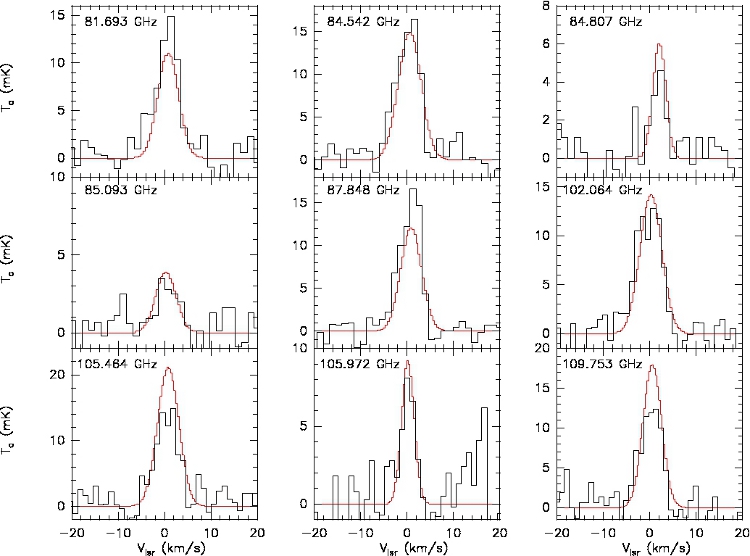| EPoS Contribution |
|
Formamide (NH2CHO) in star forming regions: a crucial precursor of prebiotic material
Ana Lopez-Sepulcre IPAG, Grenoble, FR | |
|
Understanding how life on Earth originated represents one of the hot topics in modern science. One of the big questions is whether the original chemical mechanism that led from simple molecules to life was connected to metabolism or to genetics, both intimately linked in living beings. Formamide (NH2CHO) contains the four most important elements for biological systems: C, H, O, and N, and it has recently been proposed as a prebiotic precursor of both metabolic and genetic material, suggesting a common chemical origin for the two mechanisms.
Formamide was detected for the first time in space in 1971, towards Sgr B2 and later in Orion KL. However, dedicated studies of NH2CHO in molecular clouds have started only very recently, as its potential as a key prebiotic molecule has become more evident. These studies present observations of formamide in a number of massive hot molecular cores, the low-mass protostellar object IRAS 16293, and the comet Hale-Bopp. In the past months, the IRAM Large Program ASAI dedicated to astrochemical surveys of star-forming regions, has revealed new discoveries of NH2CHO, including its detection, for the first time, in an outflow shock spot. The presence of formamide in such a variety of star-forming environments, as well as on a Solar System comet, suggests that this molecule could have been exogenously delivered onto a young Earth in the past. In this contribution, we will present our new ASAI results on formamide, and compare them to previous studies of NH2CHO in other regions, so as to try to understand its formation mechanisms. Indeed, establishing the formation route(s) of formamide in space remains a challenge. We will discuss the different paths that have been proposed, which include gas-phase ion-molecule and neutral-neutral reactions, as well as gas-grain reactions followed by evaporation into the gas. Last but not least, we will emphasize the importance of joining efforts with experts in both theoretical and experimental chemistry in order to make progress. | |
 | |
| Caption: NH2CHO lines detected in the protostellar outflow shock L1157-B1 at 3mm, as part of the IRAM Large Programme ASAI. The best LTE fit to the observed spectra is depicted in red. | |
| Collaborators: E. Mendoza, Obs. Valongo, Brazil B. Lefloch, IPAG, Grenoble C. Ceccarelli, IPAG, Grenoble N. Balucani, U. Perugia, Italy H. Boechat Roberty, Obs. Valongo, Brazil |
Suggested Session:
Chemistry |

